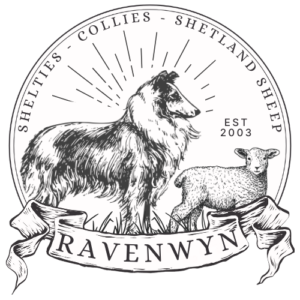Shetland Sheep are a small but mighty sheep breed with deep roots in the Shetland Islands, just off the coast of Scotland. These hardy little sheep have been around for over a thousand years, and it’s easy to see why they’ve stood the test of time. Known for their exceptional wool, adaptability, and charming personalities, Shetland Sheep have become a favorite among family homesteads and fiber enthusiasts alike.
Small in Size, Big in Character
Shetland Sheep are one of the smallest British breeds, with ewes usually weighing between 75 and 100 pounds and rams at 90 to 125 pounds. Their small size is an advantage, especially since they originally thrived in the tough conditions of the Shetland Islands, where food was often scarce. Despite their size, they come in an impressive array of colors and patterns—over 30 shades, from white and gray to brown and black—making each one a unique addition to any flock.
Wool That Wows
The wool of Shetland Sheep is truly something special. It’s soft, fine, and perfect for spinning into beautiful yarns. Each sheep produces about 2 to 4 pounds of wool each year, which might not sound like much, but what they lack in quantity, they more than make up for in quality. The wool’s fine texture makes it ideal for everything from cozy sweaters to delicate shawls, and its natural warmth and durability are highly prized by crafters. Traditional Fair Isle sweaters are only knitted from the finest of Shetland Sheep wool, which is fingering-weight Shetland Sheep lambswool.
Friendly and Low-Maintenance
Shetland Sheep are known for being friendly, intelligent, and easy to handle. They have strong flocking instincts, so they stick together, making them easy to manage whether you have a small homestead or a larger farm. They’re also incredibly hardy and can thrive on rough pastures, eating everything from grass to pesky blackberry bushes. This makes them a great choice for sustainable, low-maintenance farming.
A Few Things They Need:
- Shelter: Even though they’re tough, it’s good to have a place where they can get out of extreme weather.
- Fencing: These sheep are surprisingly agile and can jump, so sturdy fencing is a must.
- Hoof Care: Regular hoof trimming is needed, about every 6-8 weeks.
- Shearing: Shearing once a year keeps them comfortable and gives you that wonderful wool.
Long Lives and Easy Lambing
Shetland Sheep have a long lifespan for sheep, often living 10 to 12 years, with some even reaching 15. They’re also known for easy lambing, with ewes typically giving birth without much trouble. Most ewes have single lambs, but twins aren’t uncommon. The lambs may be small at birth, but they’re strong and grow quickly.
A Breed Worth Preserving
Although Shetland Sheep were once considered rare, their numbers have grown thanks to conservation efforts. Today, they’re loved not only in the Shetland Islands but around the world. Shetland Sheep are versatile and valuable for several reasons:
- Wool Production: Their fine wool is a favorite among spinners and textile makers.
- Meat Production: They produce lean, flavorful meat, even though they’re small.
- Conservation Grazing: They’re excellent at maintaining landscapes by grazing on rough pastures.
- Hobby Farming: Their small size and friendly nature make them perfect for small farms and hobbyists.
In short, Shetland Sheep are a delightful and practical addition to any farm. Whether you’re interested in their rich history, their stunning wool, or just want some friendly sheep to graze your land, Shetland Sheep have a lot to offer.
